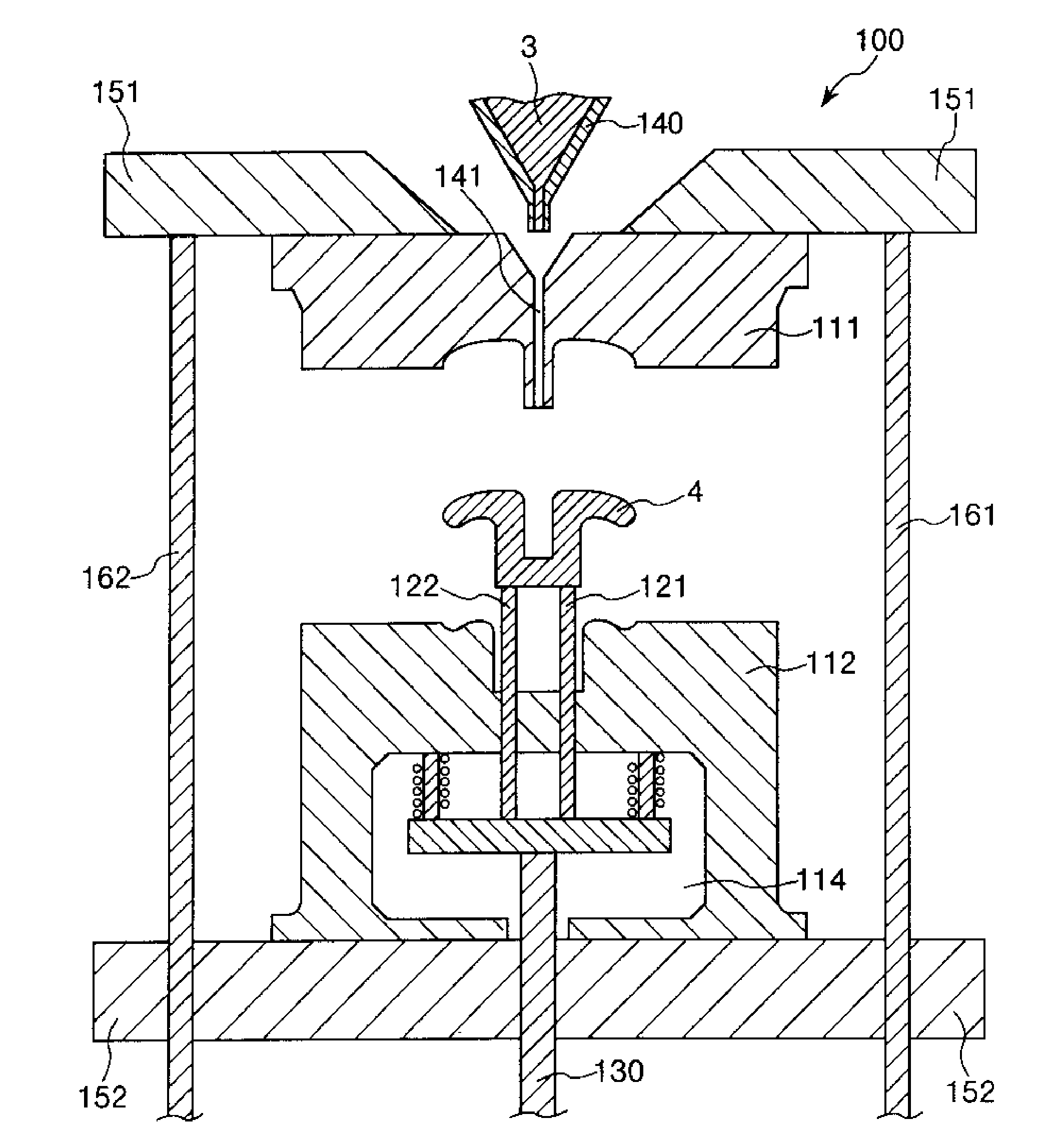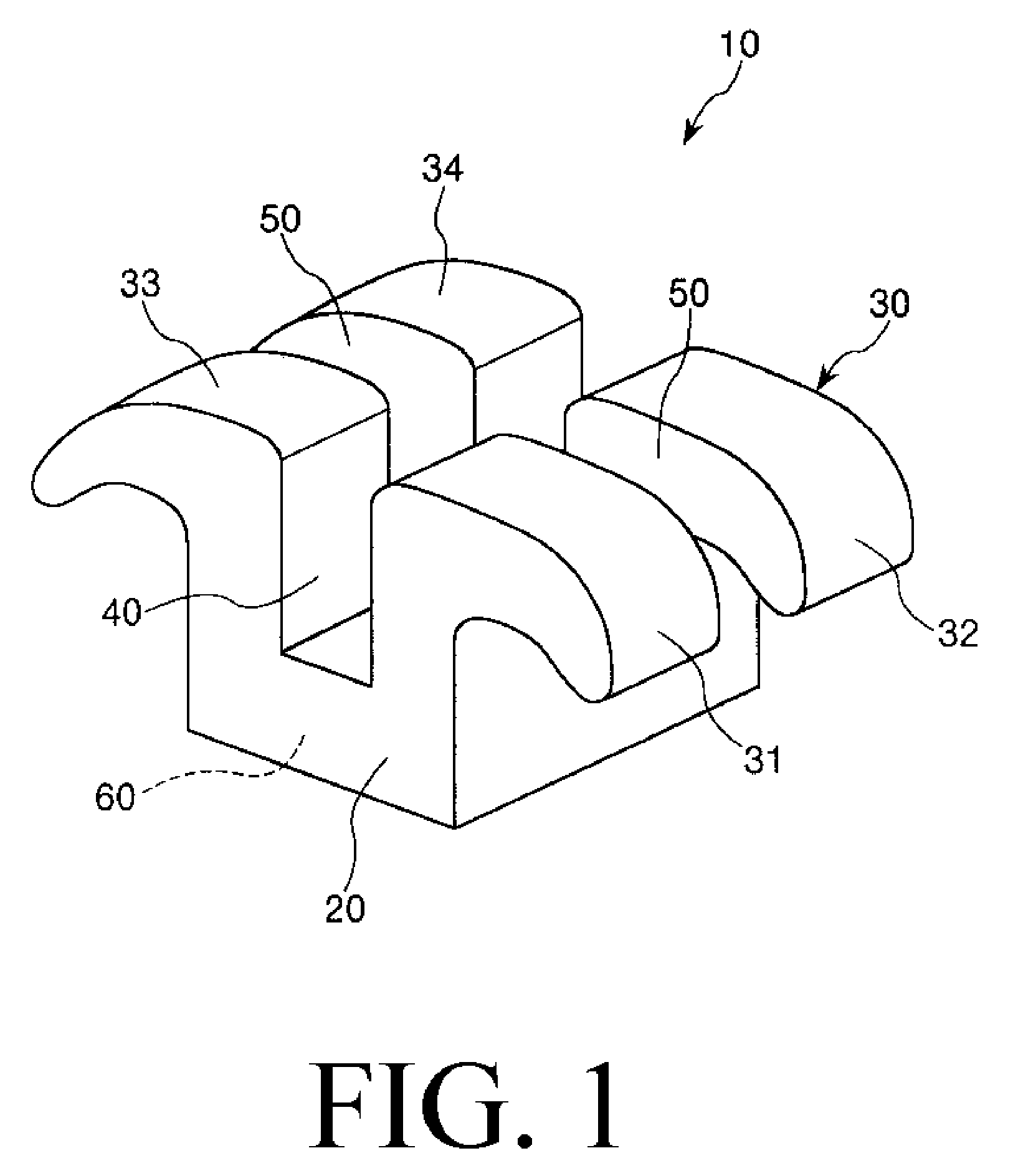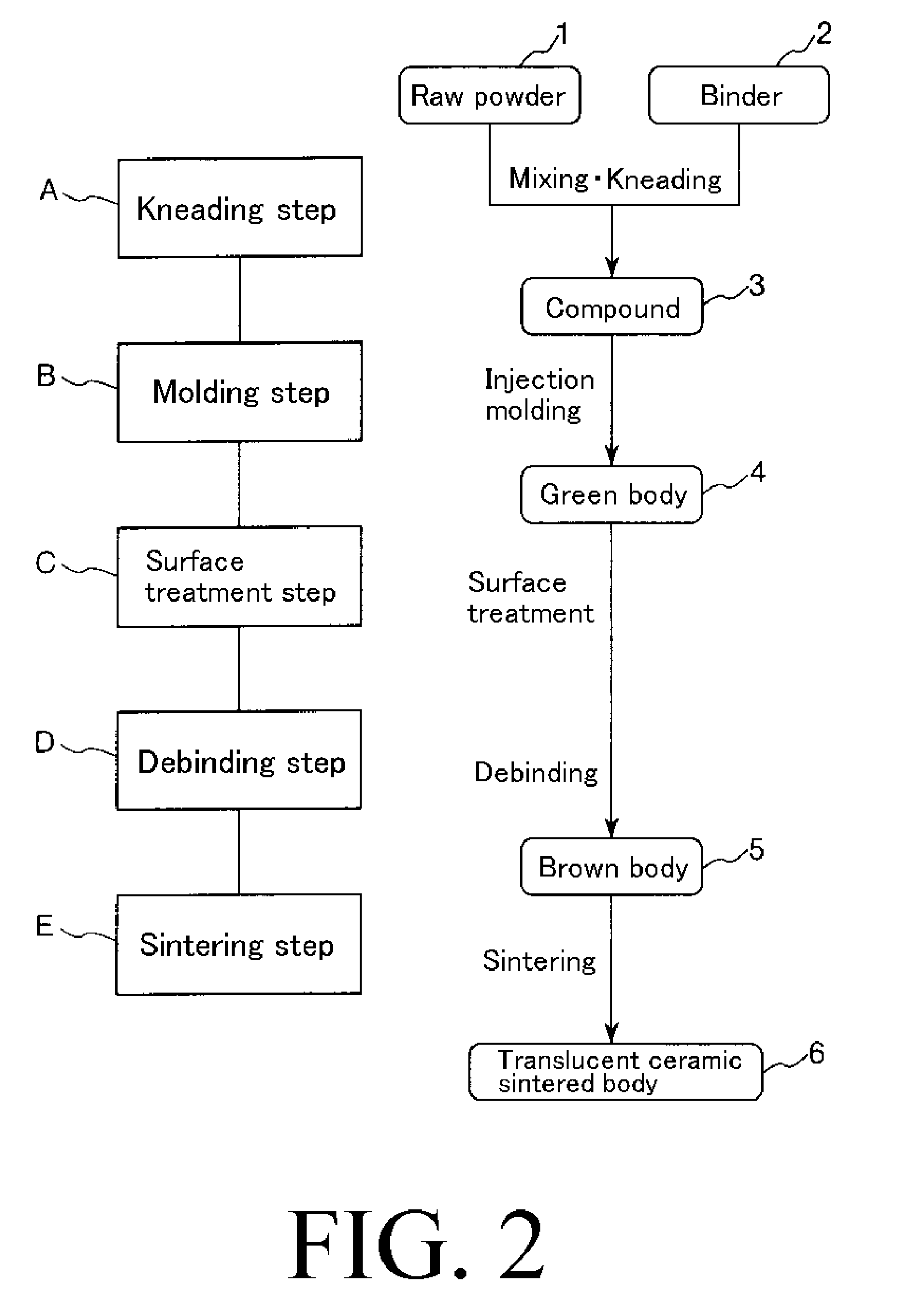Method of manufacturing translucent ceramic and orthodontic member
a manufacturing method and translucent ceramic technology, applied in manufacturing tools, othrodontics, dental surgery, etc., can solve the problems of reduced translucency and mechanical properties of translucent alumina sintered bodies obtained by conventional manufacturing methods, uniform crystal grains size, and easy decomposition, and achieve good sensuousness
- Summary
- Abstract
- Description
- Claims
- Application Information
AI Technical Summary
Benefits of technology
Problems solved by technology
Method used
Image
Examples
example 1
[0202] First, a raw powder was prepared by mixing an aluminum oxide (α-Al2O3) powder having an average particle size of 0.5 μm and a magnesium oxide powder having an average particle size of 0.2 μm. The blending ratio of the respective powders was set to ensure that a content of the magnesium oxide powder contained in the raw powder is equal to 0.05% by mass.
[0203] Then, an organic binder was prepared by mixing: a first organic component including 26% by mass of polystyrene (having a softening point of 120° C. and a decomposition temperature of 590° C.) and 30% by mass of ethylene-vinyl acetate copolymer (having a softening point of 100° C. and a decomposition temperature of 475° C.); a second organic component including 28% by mass of paraffin wax (having a melting point of 55° C. and a decomposition temperature of 248° C.); and a plasticizer including 16% by mass of phthalic acid dibutyl (DBP).
[0204] Next, a mixture (composition) was obtained by mixing the raw powder and the organ...
example 2
[0211]A translucent ceramic sintered body was obtained in the same manner as in Example 1 except that the preheating temperature and the kneading temperature were changed to 125° C. and 70° C., respectively.
example 3
[0212]A translucent ceramic sintered body was obtained in the same manner as in Example 1 except that the preheating temperature and the kneading temperature were changed to 175° C. and 90° C., respectively.
PUM
| Property | Measurement | Unit |
|---|---|---|
| time | aaaaa | aaaaa |
| temperature | aaaaa | aaaaa |
| temperature | aaaaa | aaaaa |
Abstract
Description
Claims
Application Information
 Login to View More
Login to View More - R&D
- Intellectual Property
- Life Sciences
- Materials
- Tech Scout
- Unparalleled Data Quality
- Higher Quality Content
- 60% Fewer Hallucinations
Browse by: Latest US Patents, China's latest patents, Technical Efficacy Thesaurus, Application Domain, Technology Topic, Popular Technical Reports.
© 2025 PatSnap. All rights reserved.Legal|Privacy policy|Modern Slavery Act Transparency Statement|Sitemap|About US| Contact US: help@patsnap.com



